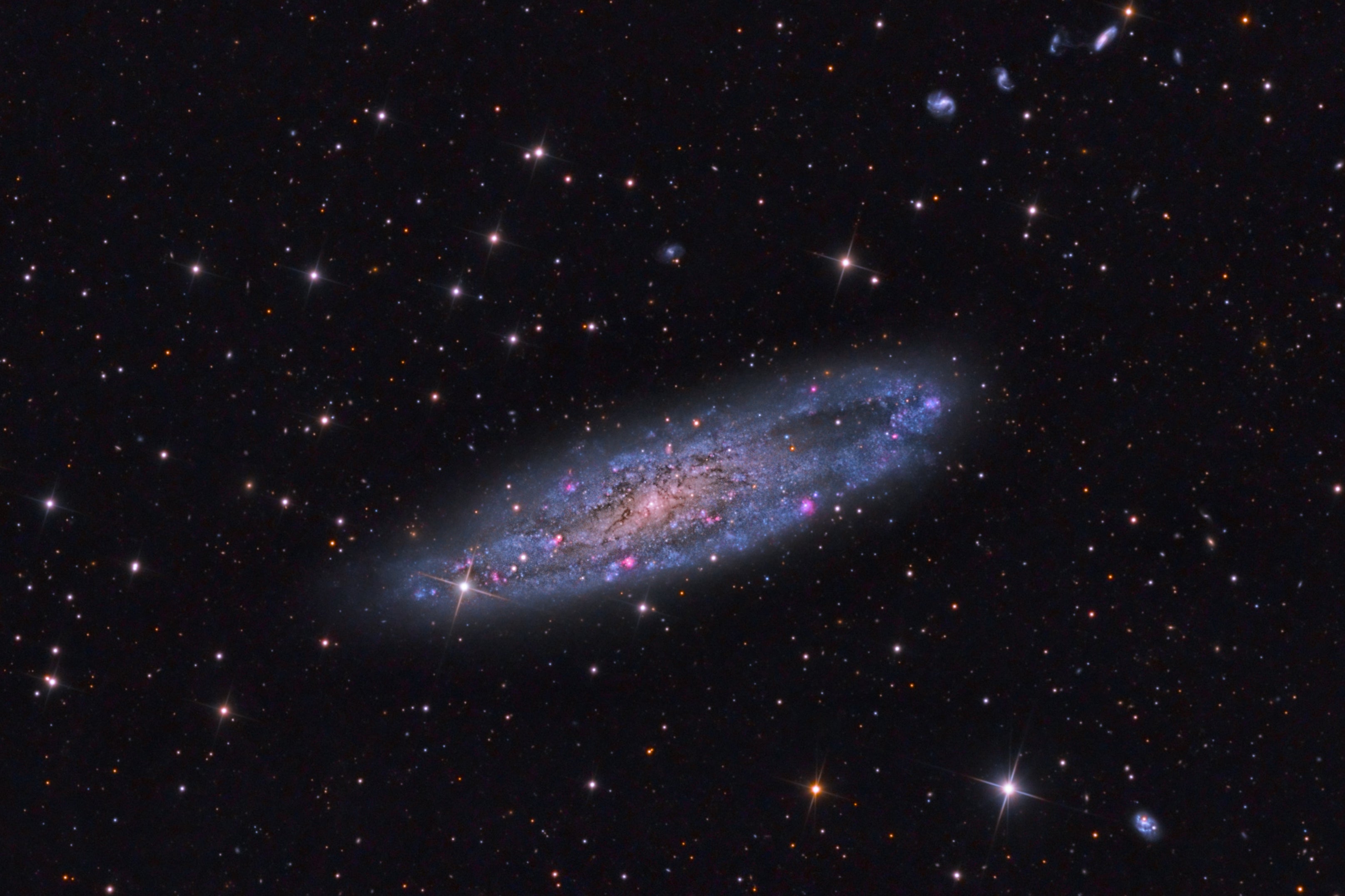
Burbidge’s Chain in Cetus the Whale is one of a few examples of a group of galaxies lying some distance beyond a nearby, brighter foreground galaxy — in this case NGC 247. Stephan’s Quintet near NGC 7331 and Hickson 56 near NGC 3718 are others.
Although these galaxies are challenging to observe, this chain is easy to locate. Find Diphda (Beta [β] Ceti) and scan about 3° south-southeast. (As a side note, Diphda is brighter than Alpha [α] Ceti, Menkar.) The foreground object, NGC 247, is a whale of a galaxy. It’s bright — magnitude 9 — and large, 19′ by 5.5′ across. Burbidge’s Chain is just slightly northeast from the northern tip of this large galaxy. As observing targets go, this is a tough one. The string of four spiral galaxies ranges from about magnitude 14 to 17, meaning a large aperture and excellent skies are essential. At –20° in declination, the farther south you observe from, the greater your chance of success. For astroimagers, a good picture of NGC 247 should reveal Burbidge’s Chain, too.
Several chains in Halton Arp’s Atlas of Peculiar Galaxies resemble this one: Arp 325 in Virgo, near the Boötes border; and Arp 332 in Eridanus, near the Fornax border. Both are faint and require large telescopes to observe.
NGC 247 itself is worthy of scrutiny even if the background group isn’t visible. It’s quite large because it lies only 11 million light-years away. (Burbidge’s Chain is about 300 million light-years distant.) NGC 247 is part of the Sculptor Galaxy Group. This near-edge-on SAB(s)d spiral is small, only 70,000 light-years across, and has a low surface brightness. There is a pronounced gap on one side of the spiral, so some call it the Needle’s Eye Galaxy.









